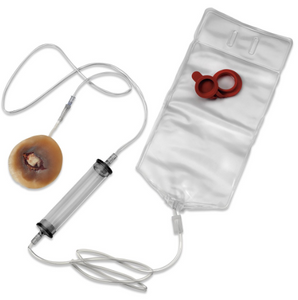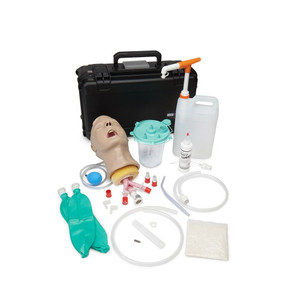Description
The Life/form Moulage Wound - Major Muscle Laceration Simulator is a specialized medical training tool designed to simulate a realistic major muscle laceration for educational purposes. This simulator is used to train healthcare professionals, first responders, and students in assessing, managing, and treating traumatic injuries involving muscle lacerations.
Key Features and Components:
-
Realistic Wound Simulation: The simulator features a lifelike moulage wound that replicates the appearance of a major muscle laceration, including visible tearing of muscle tissue, exposed muscle fibers, and surrounding tissue damage. This realism allows learners to practice assessing the severity of the injury and performing appropriate interventions.
-
Anatomical Accuracy: The moulage wound is anatomically accurate, incorporating details of muscle anatomy, tissue layers, blood vessels, and skin to enhance the realism of the simulation.
-
Durable Construction: The simulator is constructed using materials that closely resemble human tissues, providing a tactile and visual experience similar to real muscle and skin tissues.
-
Versatile Application: The major muscle laceration simulator can be used in various medical training scenarios, including trauma care simulations, emergency response drills, and surgical training exercises.
-
Reusable and Interchangeable: The moulage wound can be easily attached to a training manikin or standardized patient for repeated use. Additional wounds or injuries may be available for interchangeability, allowing for diverse training scenarios.
-
Training Accessories: Some simulators may come with additional components, such as simulated blood, wound dressing materials, and tools for practicing wound closure techniques.
Benefits and Educational Value:
-
Enhanced Realism: The simulator provides a highly realistic representation of a major muscle laceration, helping learners develop skills in injury assessment, wound management, and surgical interventions.
-
Hands-On Learning: Healthcare professionals can practice suturing techniques, wound closure, and other interventions appropriate for muscle lacerations in a controlled training environment.
-
Patient Communication Skills: The simulator facilitates communication and interaction between healthcare providers and simulated patients, enhancing teamwork and communication skills during trauma care scenarios.
-
Curriculum Integration: The major muscle laceration simulator can be integrated into medical education curricula to supplement classroom learning with hands-on simulation experiences focused on soft tissue injuries and surgical skills development.






